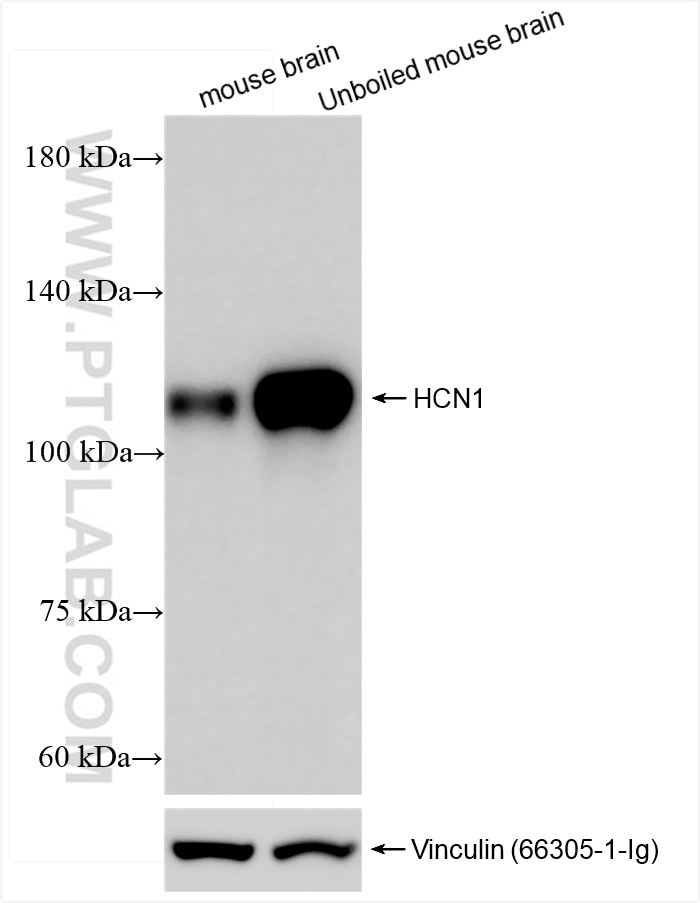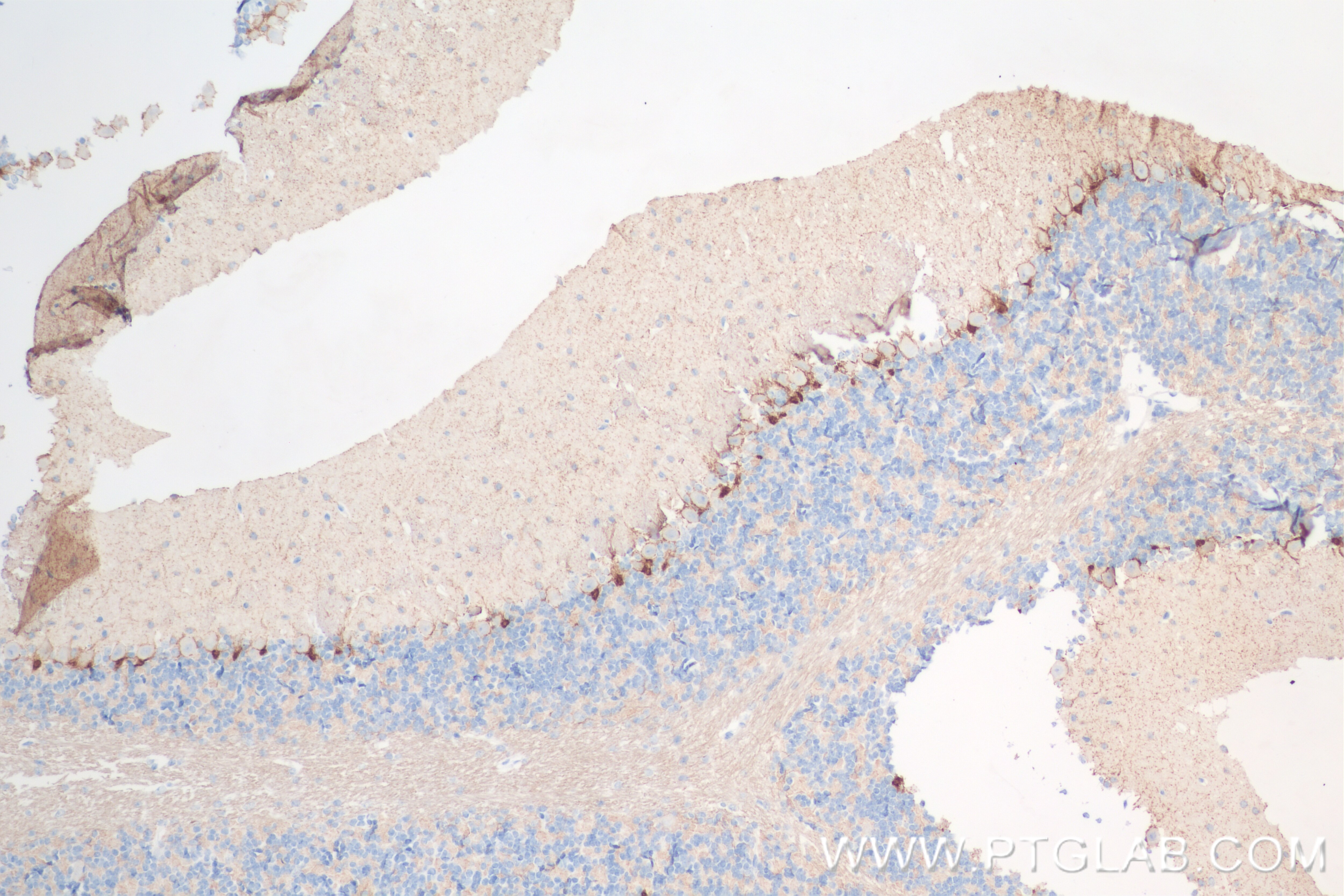Validation Data Gallery
Tested Applications
| Positive WB detected in | mouse brain tissue |
| Positive IHC detected in | mouse cerebellum tissue Note: suggested antigen retrieval with TE buffer pH 9.0; (*) Alternatively, antigen retrieval may be performed with citrate buffer pH 6.0 |
Recommended dilution
| Application | Dilution |
|---|---|
| Western Blot (WB) | WB : 1:1000-1:6000 |
| Immunohistochemistry (IHC) | IHC : 1:200-1:800 |
| It is recommended that this reagent should be titrated in each testing system to obtain optimal results. | |
| Sample-dependent, Check data in validation data gallery. | |
Product Information
84845-3-RR targets HCN1 in WB, IHC, ELISA applications and shows reactivity with human, mouse samples.
| Tested Reactivity | human, mouse |
| Host / Isotype | Rabbit / IgG |
| Class | Recombinant |
| Type | Antibody |
| Immunogen |
Peptide 相同性解析による交差性が予測される生物種 |
| Full Name | hyperpolarization activated cyclic nucleotide-gated potassium channel 1 |
| Calculated molecular weight | 99 kDa |
| Observed molecular weight | 99-120 kDa |
| GenBank accession number | NM_021072 |
| Gene Symbol | HCN1 |
| Gene ID (NCBI) | 348980 |
| Conjugate | Unconjugated |
| Form | |
| Form | Liquid |
| Purification Method | Protein A purfication |
| UNIPROT ID | O60741 |
| Storage Buffer | PBS with 0.02% sodium azide and 50% glycerol{{ptg:BufferTemp}}7.3 |
| Storage Conditions | Store at -20°C. Stable for one year after shipment. Aliquoting is unnecessary for -20oC storage. |
Background Information
HCN1, also named as BCNG1, belongs to the potassium channel HCN family. It hyperpolarization-activated ion channel exhibiting weak selectivity for potassium over sodium ions. HCN1 contributes to the native pacemaker currents in heart (If) and in neurons (Ih). It is activated by cAMP, and at 10-100 times higher concentrations, also by cGMP. HCN1 may mediate responses to sour stimuli.
Protocols
| Product Specific Protocols | |
|---|---|
| IHC protocol for HCN1 antibody 84845-3-RR | Download protocol |
| WB protocol for HCN1 antibody 84845-3-RR | Download protocol |
| Standard Protocols | |
|---|---|
| Click here to view our Standard Protocols |


